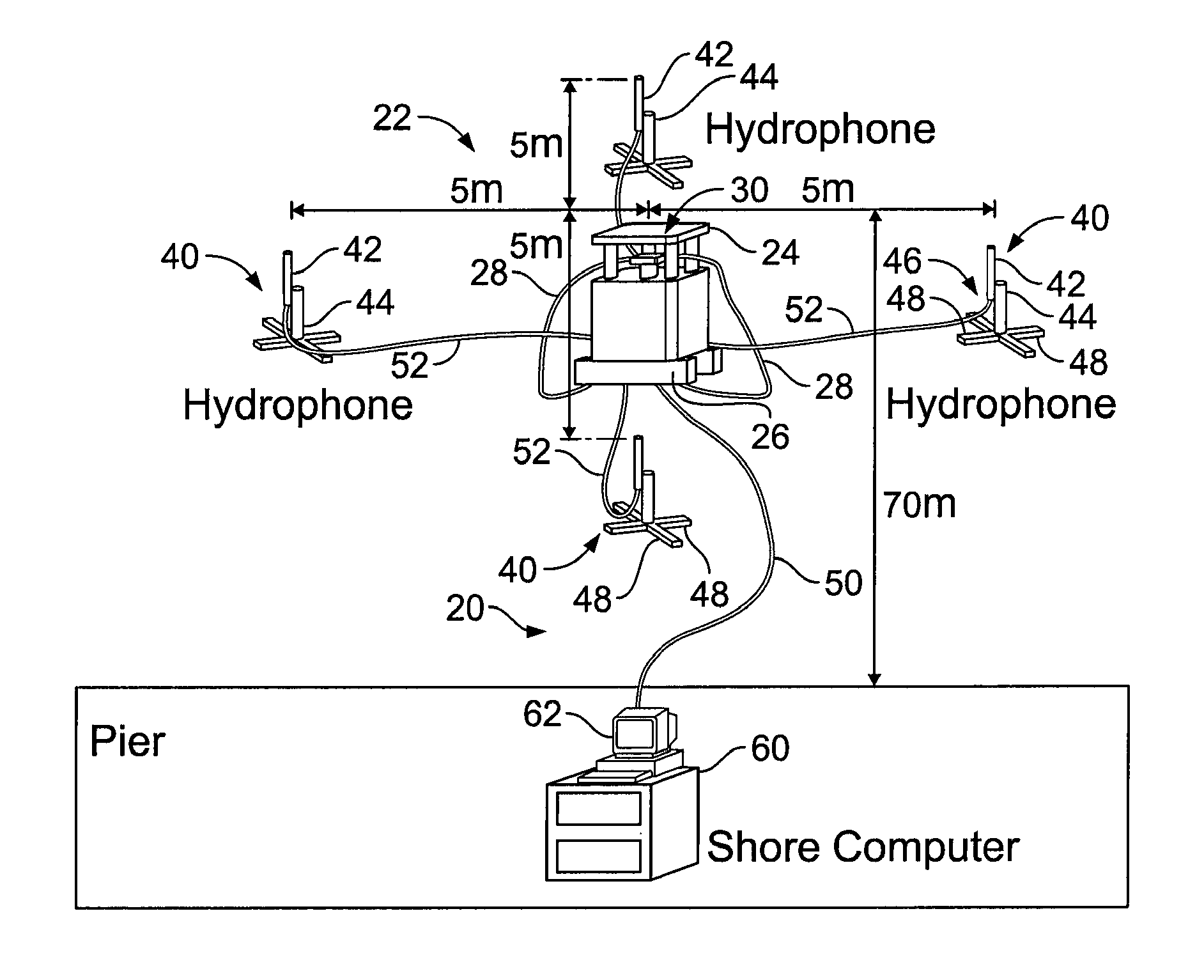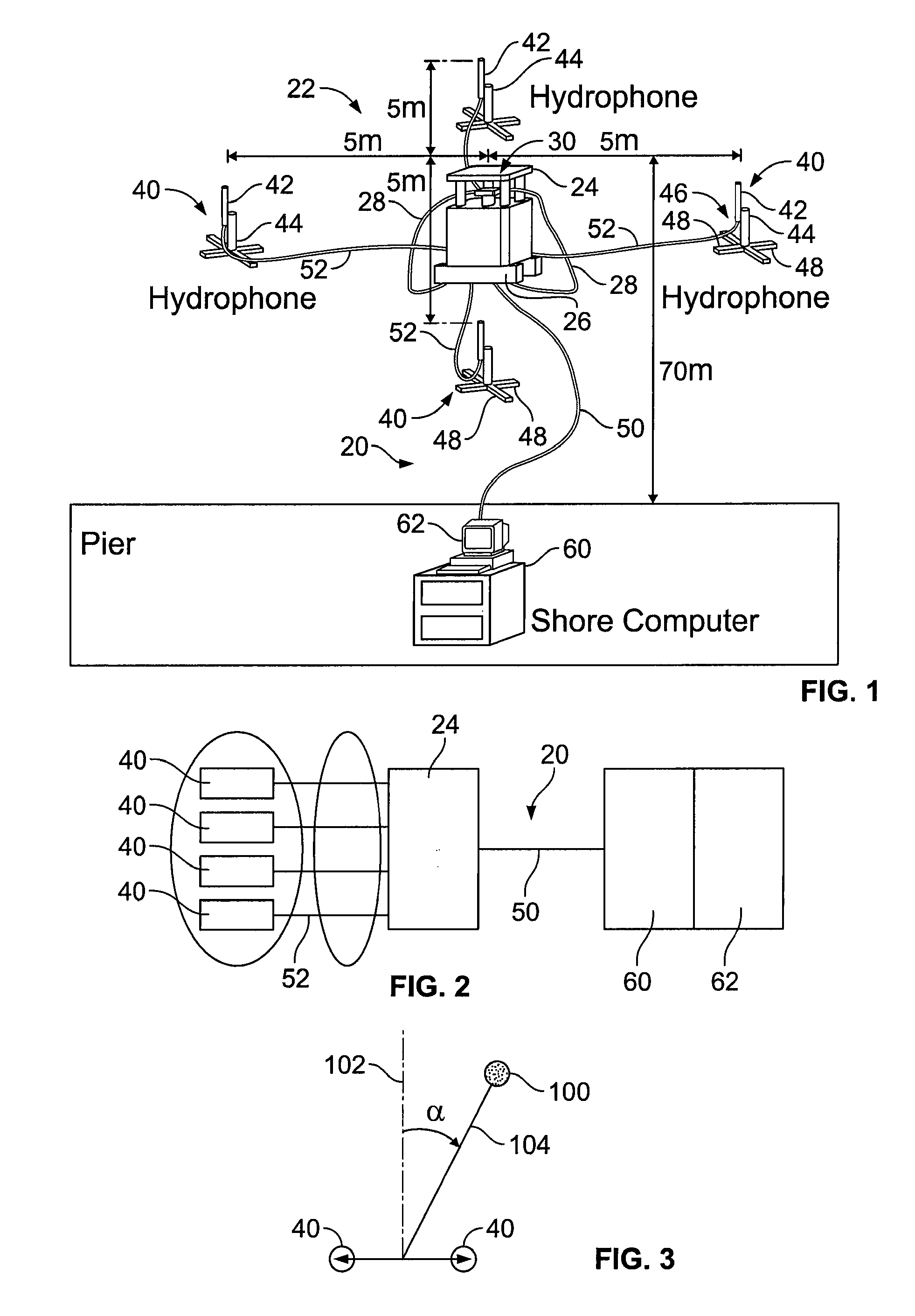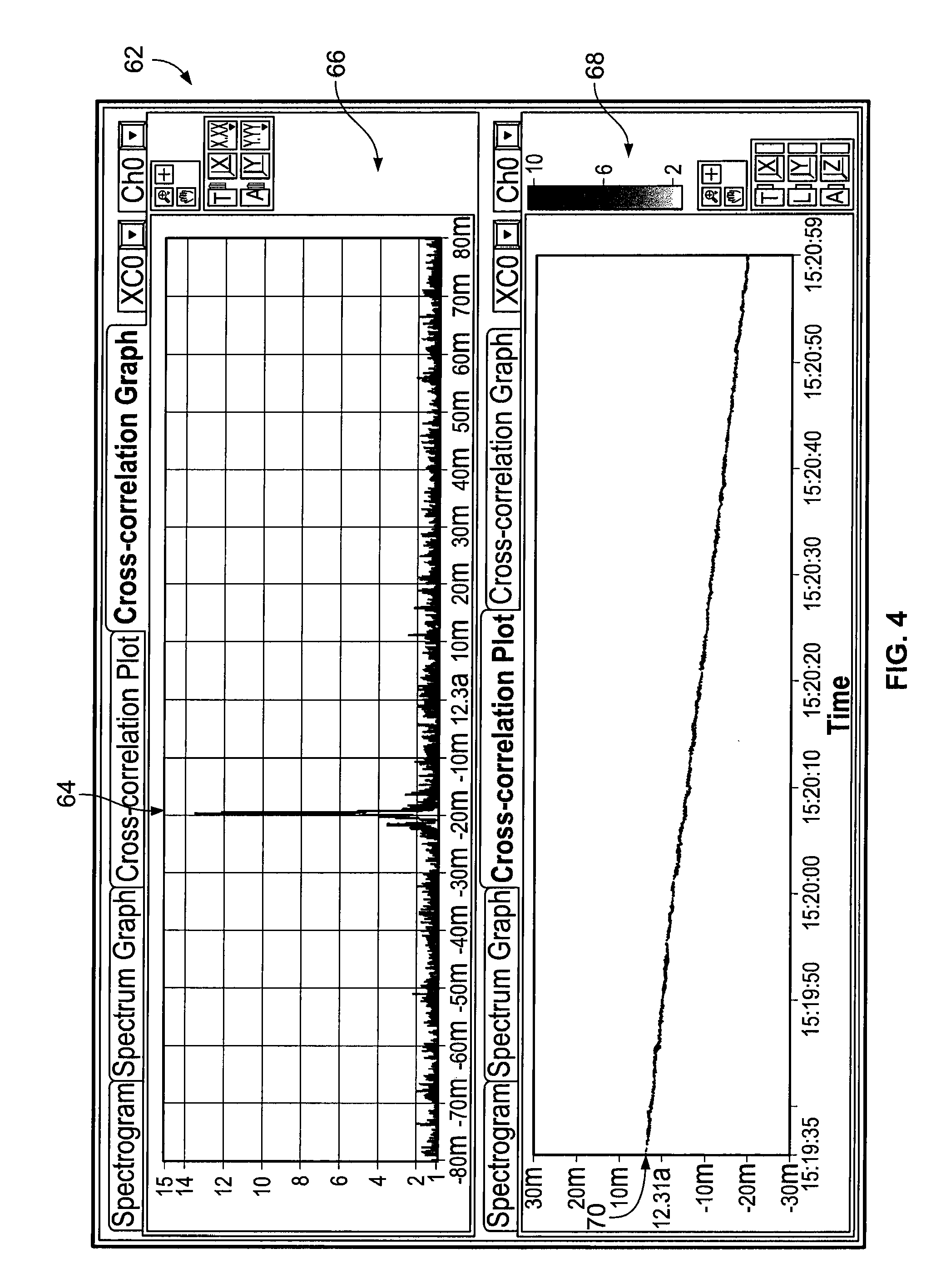Passive acoustic underwater intruder detection system
a detection system and underwater technology, applied in the direction of systems with cathode-ray tube indications, instruments, machines/engines, etc., can solve the problems of harmful to marine mammals, high false alarm level, and significant terrorist threat to domestic harbors, and achieve rapid and accurate placement of sensors, high accuracy, and precise a priori placement
- Summary
- Abstract
- Description
- Claims
- Application Information
AI Technical Summary
Benefits of technology
Problems solved by technology
Method used
Image
Examples
Embodiment Construction
[0026]Turning now to FIG. 1, the underwater passive acoustic threat detection system 20 according to aspects of embodiments of the disclosed subject matter may include a cluster 22 of sensors. The cluster 22 may include a center pod 24, which may be bottom mounted using a bottom mooring which may include a weight, such as a cement block 26 and means for detaching the center pod 24 from the bottom mooring, such as explosive bolts (not shown). The center pod 24 may be kept upright on the bottom by a plurality of support brackets 28 extending outwardly from the center pod 24. The center pod 24 may contain a portion of the system 20, such as the data acquisition system 30, shown schematically in FIG. 2.
[0027]Data may be acquired by a plurality of, e.g., four hydrophones 40, shown as part of the sensor cluster 22, in generally a rectangular configuration around the center pod 24. Acquired data can be transmitted over a cable 50 from the center pod 24 to a dry-land (or boat-carried) compu...
PUM
| Property | Measurement | Unit |
|---|---|---|
| diameter | aaaaa | aaaaa |
| frequencies | aaaaa | aaaaa |
| height | aaaaa | aaaaa |
Abstract
Description
Claims
Application Information
 Login to View More
Login to View More - R&D
- Intellectual Property
- Life Sciences
- Materials
- Tech Scout
- Unparalleled Data Quality
- Higher Quality Content
- 60% Fewer Hallucinations
Browse by: Latest US Patents, China's latest patents, Technical Efficacy Thesaurus, Application Domain, Technology Topic, Popular Technical Reports.
© 2025 PatSnap. All rights reserved.Legal|Privacy policy|Modern Slavery Act Transparency Statement|Sitemap|About US| Contact US: help@patsnap.com



